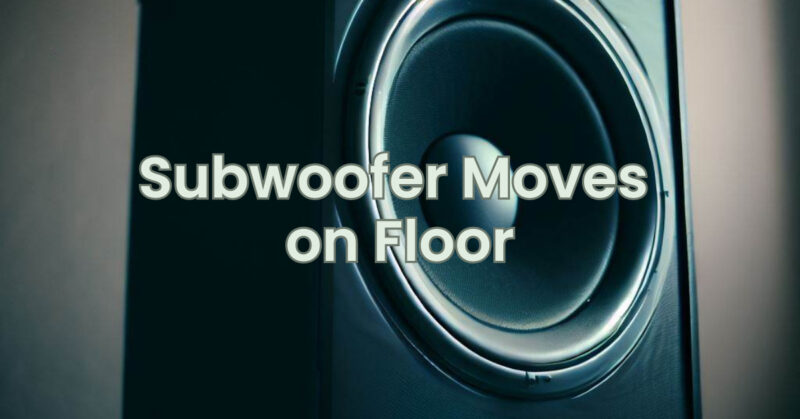Is your subwoofer constantly moving or sliding around on the floor, disrupting your audio experience and potentially causing safety concerns? If so, you’re not alone. In this article, we’ll explore the reasons why a subwoofer may move on the floor and provide practical tips to prevent unwanted movement, ensuring a stable and enjoyable listening experience.
- Vibrations and Bass Energy: Subwoofers are designed to reproduce low-frequency sounds with a significant amount of energy. This energy can result in vibrations that may cause the subwoofer to move or slide on certain types of flooring, especially smooth surfaces like hardwood or tile. The vibrations can also be transmitted to nearby objects, amplifying the movement.
- Subwoofer Placement: Ensure that you have placed your subwoofer on a stable and level surface. Uneven surfaces or sloping floors can contribute to the subwoofer’s movement. If your floor is uneven, consider using small furniture pads or leveling feet under the subwoofer to create stability.
- Subwoofer Isolation Pads: Using isolation pads is an effective solution to prevent subwoofer movement. These pads are made of materials that dampen vibrations, such as rubber or foam. Place the isolation pads underneath the subwoofer to absorb vibrations and provide additional grip, reducing the chances of movement on the floor.
- Spiked Feet or Rubber Feet: Some subwoofers come with adjustable spiked feet or rubber feet. Spiked feet are designed to pierce through carpets and firmly grip the floor, preventing movement. Rubber feet, on the other hand, provide traction and grip on smooth surfaces. Adjust the feet accordingly to achieve stability and minimize any movement.
- Subwoofer Weight and Enclosure Design: The weight and construction of your subwoofer can also influence its tendency to move on the floor. Heavier subwoofers tend to be more stable, while lighter ones may be prone to movement. Additionally, subwoofers with solid and well-built enclosures help dampen vibrations and reduce unwanted movement.
- Anti-Slip Mats or Rugs: Placing an anti-slip mat or rug under the subwoofer can provide additional grip and stability. These mats have a textured surface that grips both the subwoofer and the floor, minimizing movement. Choose a mat that is suitable for your flooring type and ensure that it is larger than the subwoofer’s footprint to provide sufficient coverage.
- Rearranging Room Layout: Consider rearranging the furniture or speaker placement in the room to reduce the likelihood of subwoofer movement. By positioning nearby objects or furniture strategically, you can create a barrier or provide stability for the subwoofer. However, be cautious not to obstruct the subwoofer’s vents or interfere with its performance.
Unwanted movement of a subwoofer on the floor can be a frustrating issue that compromises your listening experience. By implementing these practical tips, such as using isolation pads, adjusting spiked or rubber feet, placing anti-slip mats, and ensuring proper subwoofer placement, you can significantly reduce or eliminate the movement. Remember to consider the weight, enclosure design, and overall stability of the subwoofer, as well as the characteristics of your flooring. With these precautions in place, you can enjoy powerful and immersive bass without the hassle of a moving subwoofer.


